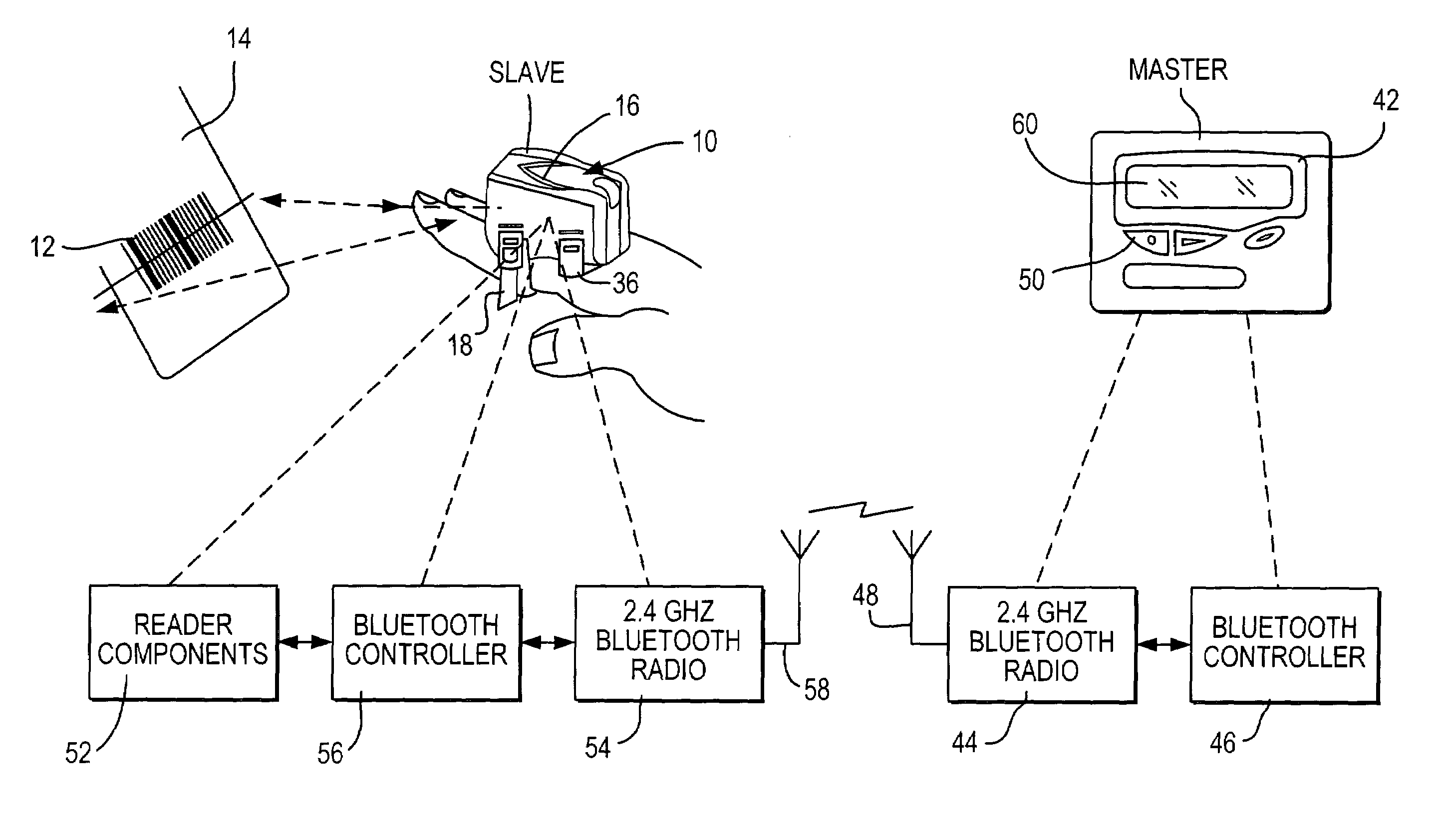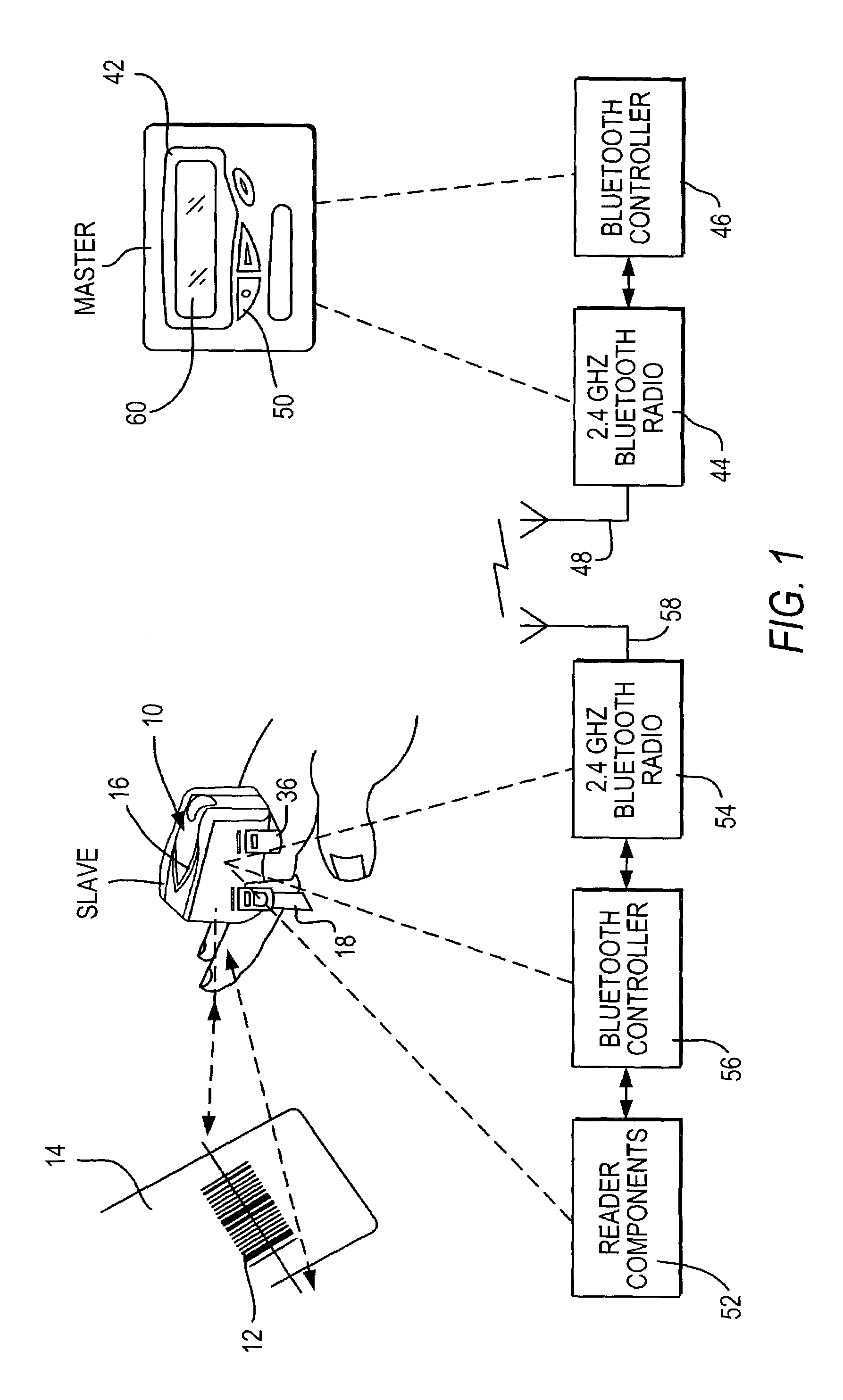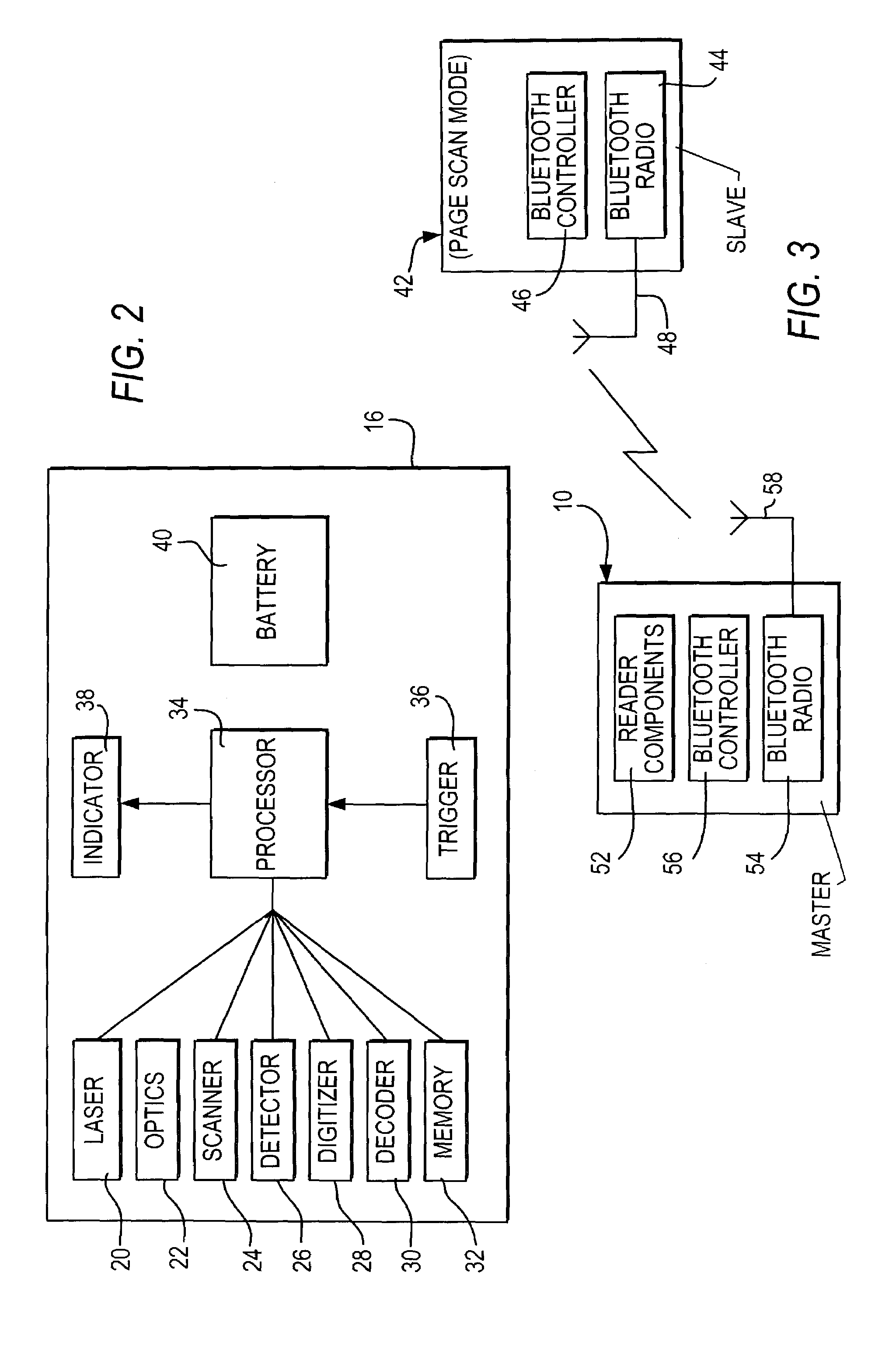Method of and arrangement for minimizing power consumption and data latency of an electro-optical reader in a wireless network
- Summary
- Abstract
- Description
- Claims
- Application Information
AI Technical Summary
Benefits of technology
Problems solved by technology
Method used
Image
Examples
first embodiment
[0036]In accordance with this first embodiment of the invention, a new operational mode that allows both low power and low data latency is activated in the slave radio 54 of the reader by using a vendor-specific, custom, host control interface (HCI) command. The slave controller 56 sends the HCI command in packet form to the slave radio 54. The HCI command contains two parameters to specify the duty cycle, namely the “wake time” during which the slave is actively listening for signals from the master, and the “sleep time” during which the slave is not listening for signals from the master.
[0037]In this new mode, the master operates normally by continuously trying to communicate with the slave. However, if the reader has no data to send to the master, that is, the reader has not read a symbol, then the slave will respond at fixed time intervals or the wake times specified by the HCI command. In fact, the slave will not even attempt to listen for signals from the master during the sle...
second embodiment
[0043]In this second embodiment, the radio 54 in the reader would normally be off. When the reader has data to send to the terminal, such as from a scanned symbol, the controller 56 would turn the radio 54 on and attempt to page the terminal. The page function is used to establish a piconet with a Bluetooth device that is in page scan mode. Since the terminal is always in the page scan mode, the connection will be established quickly. This can be assured by having the reader quickly scan through all possible frequencies that the terminal could be listening to. Since the reader initiated the connection, it operates as the master, and the terminal operates as the slave in the resulting piconet shown in FIG. 3. Once the piconet is established, the reader sends the data to the terminal and then immediately terminates the piconet. The reader then turns the radio 54 off and waits until the reader has more data to send.
[0044]This second embodiment requires no radio activity by the reader w...
PUM
 Login to View More
Login to View More Abstract
Description
Claims
Application Information
 Login to View More
Login to View More - R&D
- Intellectual Property
- Life Sciences
- Materials
- Tech Scout
- Unparalleled Data Quality
- Higher Quality Content
- 60% Fewer Hallucinations
Browse by: Latest US Patents, China's latest patents, Technical Efficacy Thesaurus, Application Domain, Technology Topic, Popular Technical Reports.
© 2025 PatSnap. All rights reserved.Legal|Privacy policy|Modern Slavery Act Transparency Statement|Sitemap|About US| Contact US: help@patsnap.com



